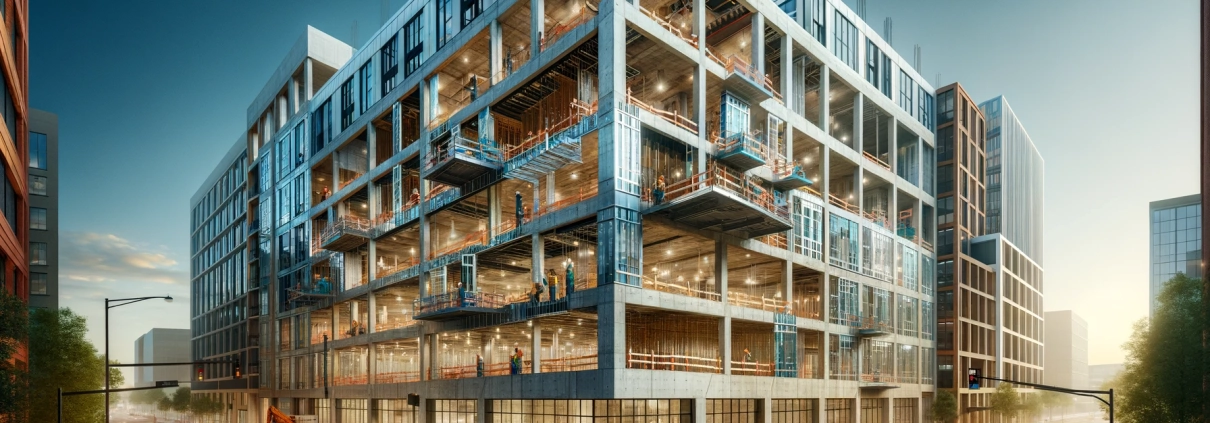Warm Shell
Any building/rentable area that has been minimally fitted out with basic services (such as ceilings, lighting, plumbing and HVAC) and is now ready to lease to the tenant. Usually these “warm shell improvements” – necessary to convert the building from a cold shell to a warm shell – are only completed following signature of the lease agreement in order to alleviate the Landlord paying for unnecessary improvements that the Tenant may not require. The transition from a “Cold Shell” to a “Warm Shell” is referred to as the “Build-out”.
Putting ‘Warm Shell’ in Context
Imagine a hypothetical scenario involving the Market Street Plaza, a newly retail development located in the bustling downtown area of Springfield. The development spans 45,000 square feet, designed to host a variety of tenants, including retail stores fronts and restaurants.
Market Street Plaza was initially developed as a “Cold Shell,” meaning it had the basic structure, including the exterior walls, roof, and bare concrete floors, but lacked any interior finishes or installations necessary for immediate occupancy.
A local restaurant chain, Springfield Steakhouse, expressed interest in leasing a 4,000 square foot space within this development. In line with their lease agreement, the landlord began transforming the space from a cold shell to a warm shell. This transition, commonly referred to as the “Build-out,” included the installation of dropped ceilings, commercial-grade flooring, basic plumbing for kitchen and restrooms, electrical systems with lighting, and a heating, ventilation, and air conditioning (HVAC) system suitable for restaurant use.
This build-out was strategically done post-lease signing to ensure that the improvements were specifically tailored to meet the operational needs of the tenant, thereby avoiding unnecessary costs that might not align with the tenant’s requirements. For example, the HVAC system installed was of a capacity to handle the high heat and odors from cooking, something that would not necessarily be applicable for a standard retail space setup.
Springfield Steakhouse successfully opened six months after the lease signing, offering a popular culinary experience that attracted more visitors and tenants to Market Street Plaza. This case exemplifies how warm shell improvements are pivotal in customizing a space to tenant specifications, fostering a beneficial relationship between landlord and tenant.
Frequently Asked Questions about Warm Shell in Commercial Real Estate
What is a warm shell in commercial real estate?
A warm shell refers to a building or rentable area that includes basic services such as ceilings, lighting, plumbing, and HVAC, making it ready to lease to a tenant.
How does a warm shell differ from a cold shell?
A cold shell includes only the basic structural components like exterior walls, roof, and bare floors, whereas a warm shell includes additional improvements like HVAC, lighting, and plumbing.
When are warm shell improvements typically completed?
Warm shell improvements are usually completed after the lease is signed to ensure they align with the tenant’s specific operational needs and avoid unnecessary costs.
What is meant by the term "Build-out" in this context?
The “Build-out” refers to the process of converting a cold shell into a warm shell by installing key building systems and interior finishes necessary for tenant use.
Why do landlords wait until lease signing to complete warm shell improvements?
This approach helps avoid paying for unnecessary improvements by tailoring the build-out to the tenant’s specific needs after the lease is signed.
How was the warm shell concept applied at Market Street Plaza?
The landlord added ceilings, flooring, plumbing, lighting, and an HVAC system tailored for restaurant use only after Springfield Steakhouse signed a lease, converting the space from cold to warm shell.
Click here to get this CRE Glossary in an eBook (PDF) format.

